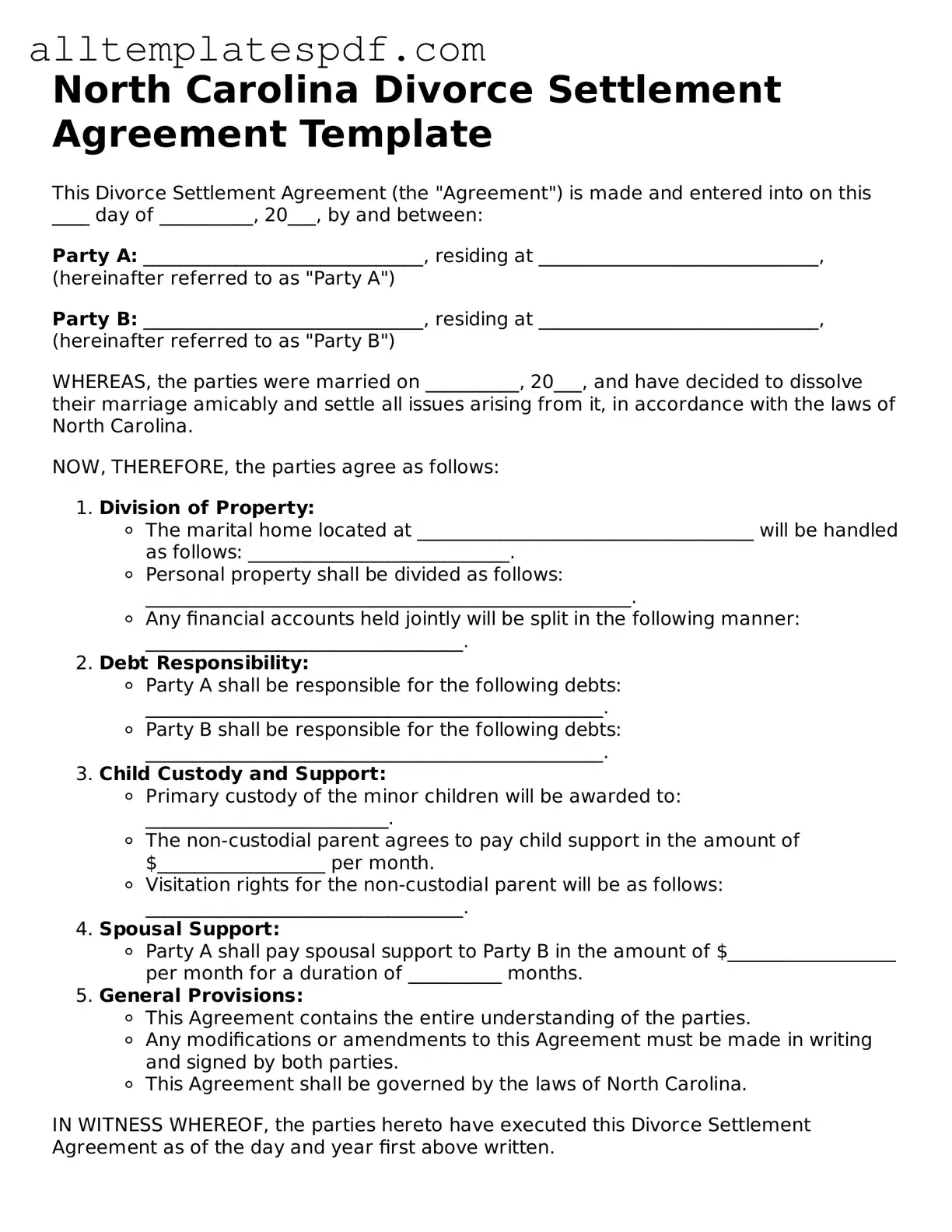Filling out the North Carolina Divorce Settlement Agreement form can be a daunting task. Many individuals make common mistakes that can lead to complications in the divorce process. One prevalent mistake is failing to provide complete and accurate information. It is essential to include all relevant details about assets, debts, and any children involved. Omitting critical information can create disputes later on and may even delay the finalization of the divorce.
Another frequent error is not understanding the implications of the terms being agreed upon. Couples often rush through the form without fully comprehending what they are signing. This lack of understanding can lead to agreements that are not in one’s best interest. It is crucial to take the time to read and understand each section of the form before submitting it.
People also sometimes neglect to consider tax implications when dividing assets. For instance, certain assets may have tax consequences that can affect the overall value received. Failing to account for these factors can lead to financial strain after the divorce is finalized. Consulting a financial advisor or tax professional can provide valuable insights during this process.
Inaccurate valuations of property and assets can be another significant mistake. Individuals may underestimate or overestimate the value of their belongings. This can lead to an unfair division of property. It is advisable to seek professional appraisals for significant assets to ensure that both parties receive a fair settlement.
Moreover, many individuals forget to address all aspects of child custody and support. The form requires clear agreements on custody arrangements, visitation schedules, and child support obligations. Overlooking these details can result in future conflicts and misunderstandings, which can be detrimental to the children involved.
Another common pitfall is failing to keep copies of the completed form and any related documents. This oversight can create confusion later, especially if disputes arise. It is wise to maintain organized records of all paperwork submitted during the divorce process.
People may also overlook the importance of having the agreement reviewed by an attorney. While it is possible to fill out the form without legal assistance, having a professional review the agreement can help identify potential issues and ensure that the rights of both parties are protected. Legal advice can provide clarity and peace of mind.
Lastly, individuals sometimes underestimate the significance of signing and dating the document properly. Incomplete signatures or missing dates can render the agreement invalid. Therefore, double-checking all signatures and ensuring that the form is correctly dated is a crucial step that should not be overlooked.
